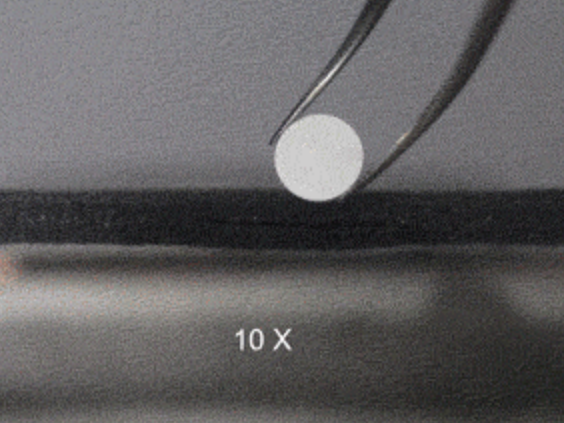‘Superfast’ new manufacturing method could mean breakthrough in battery technology, scientists say
‘Reinvention’ of ceramics firing process could be used by artificial intelligence to create new materials with wide range of possible applications

A “breakthrough” method of firing ceramic materials at high speed could enable a leap in manufacturing a wide range of products, including solid-state batteries, fuel cells and for 3D printing technologies, scientists have said.
Ceramics have been used by humans for at least 26,000 years, but conventional ceramic sintering – part of the firing process which makes the materials much more durable – can take hours.
Furnaces have to heat up, then it can take several more hours to “bake” the ceramic materials.
The process is not only lengthy, but also presents particular problems for the applications the materials can then be used for.
But the new technique, developed by scientists at the University of Maryland, has invented what they describe as “an ultrafast high-temperature sintering method that both meets the needs of modern ceramics and fosters the discovery of new material innovations.”
This could even include artificial intelligence utilising the technique to design entirely new kinds of materials – opening the door to a vast array of possible future functions.
The scientists’ invention apparently offers high heating and high cooling rates, as well as even temperature distribution when sintering materials at temperatures of up to 3,000C.
It requires “less than 10 seconds of total processing time”, which they said was more than 1,000 times faster than the traditional furnace approach of sintering.

Professor Liangbing Hu, who led the study said: “With this invention, we ‘sandwiched’ a pressed green pellet of ceramic precursor powders between two strips of carbon that quickly heated the pellet through radiation and conduction, creating a consistent high-temperature environment that forced the ceramic powder to solidify quickly.”
“The temperature is high enough to sinter basically any ceramic material. This patented process can be extended to other membranes beyond ceramics.”
Yifei Mo, an associate professor at the University of Maryland said: “This new method solves the key bottleneck problem in computation and AI-guided materials discovery. We’ve enabled a new paradigm for materials discovery with an unprecedented accelerated pace.”
Professor Jian Luo from the University of California San Diego, who also collaborated on the project said: “Ultrafast high-temperature sintering represents a breakthrough in ultrafast sintering technologies, not only because of its general applicability to a broad range of functional materials, but also due to a great potential of creating non-equilibrium bulk materials via retaining or generating extra defects.”
Xiaoyu Zheng, assistant professor at UCLA added: “We are delighted to see the pyrolysis time reduced from tens of hours to a few seconds, preserving the fine 3D-printed structures after fast sintering.”
The research is published in the journal Science.
Join our commenting forum
Join thought-provoking conversations, follow other Independent readers and see their replies
Comments
Bookmark popover
Removed from bookmarks